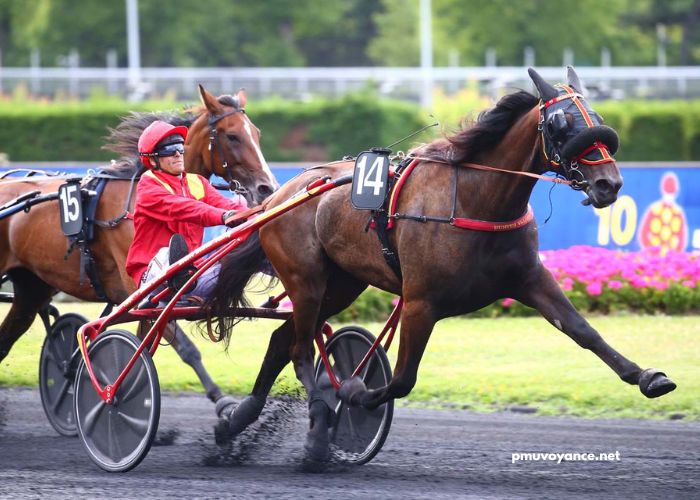In the world of horse racing, especially in French turf, Le Triangle Du Quinte is considered one of the most valuable tools for predicting the outcome of the prestigious Quinté+ race. This formula helps punters and analysts alike make educated decisions, based on a combination of key factors that often lead to selecting the winning horses. It’s a concept that has gained significant attention due to its perceived effectiveness in narrowing down the possibilities and increasing the chances of success. Understanding Le Triangle Du Quinte is essential for those who wish to master the art of predicting the results of one of France’s most challenging and competitive horse races.
For seasoned horse racing enthusiasts and even casual bettors, Le Triangle Du Quinte is an important strategy to grasp. It is a system that takes into account three critical factors: the horse’s form, its jockey, and its position in the starting gate. These elements are combined into a formula that has been honed over the years by experts and trainers within the world of French horse racing. This method doesn’t just focus on picking winners based on instinct; instead, it relies on data, experience, and a deep understanding of the dynamics that influence a race. This article will explore the components of Le Triangle Du Quinte, how it works, and why it is so influential in the world of French horse racing.
What Is Le Triangle Du Quinte and Why Is It Important?
Le Triangle Du Quinte is a systematic approach to selecting horses in the Quinté+ races, which are among the most prestigious in France. The Quinté+ race is a daily event where the challenge lies not only in picking the winner but also in forecasting the horses that will place in the top five. Le Triangle Du Quinte serves as a guideline that helps punters filter out the less likely horses and focus on those with the best chances of finishing in the top positions.
The importance of Le Triangle Du Quinte lies in its ability to provide a clear structure to an otherwise chaotic and unpredictable field of competitors. It allows bettors to analyze the horses based on three key factors: the form of the horse, the quality of the jockey, and the horse’s gate position. These three factors work together to give a clearer view of which horses are more likely to perform well. The method can significantly increase the probability of selecting the right horses, making it an essential tool for anyone serious about betting on the Quinté+ races.
How Does Le Triangle Du Quinte Work?
The mechanics of Le Triangle Du Quinte are simple, yet powerful. First, bettors must analyze the form of the horse, which refers to how the horse has been performing in recent races. This can include evaluating the horse’s past victories, how well it’s run in similar conditions, and whether it has any injuries or other factors affecting its performance. The second aspect of the triangle is the jockey. A good jockey can make all the difference in a race, as their skill and experience play a huge role in the horse’s performance. The third and final factor is the horse’s position in the starting gate. This may seem less important, but the starting gate position can greatly affect a horse’s chances, especially in a crowded field.
Together, these three factors form Le Triangle Du Quinte and help punters narrow down their choices when placing bets. The idea is that if a horse is in good form, has a skilled jockey, and is starting from a favorable gate position, it has a much higher chance of success in the race. Of course, no system is foolproof, but Le Triangle Du Quinte offers a structured way to approach the race and helps to increase the chances of making a successful bet.
Why Is the Jockey Important in Le Triangle Du Quinte?
In Le Triangle Du Quinte, the role of the jockey is absolutely crucial. Even with a fast and well-trained horse, a race can be lost if the jockey doesn’t make the right decisions or lacks the skill to control the horse under pressure. In many cases, experienced jockeys can manage difficult situations better and are more adept at guiding the horse through the field, ensuring that they take the best position at the right time during the race.
In addition, jockeys who have a history of performing well in Quinté+ races or with specific horses are considered more favorable choices within the context of Le Triangle Du Quinte. Jockeys who know how to read the race, adapt to changing conditions, and use the horse’s strengths to their advantage are often the key to success. The combination of a skilled jockey and a well-prepared horse often leads to a higher chance of winning or placing highly in Le Triangle Du Quinte.
How Does the Starting Gate Position Affect Le Triangle Du Quinte?
While it may seem secondary compared to other factors like form and jockey quality, the starting gate position plays an important role in Le Triangle Du Quinte. The position from which a horse starts can affect its momentum and ability to move freely, especially in a large and competitive field. Horses that are placed in the inside gates have a slight advantage, as they can avoid being caught in the congestion that often happens at the outer positions.
In races like the Quinté+, where a large number of horses are competing, starting in a favorable position is critical. A horse with good form and a talented jockey may still be disadvantaged if it is forced to navigate through a crowded field from a poor starting position. As a result, Le Triangle Du Quinte takes into account the starting position as a key factor, as it often influences how well a horse can position itself during the race.
Can Le Triangle Du Quinte Guarantee Success?
While Le Triangle Du Quinte is a highly regarded method, it’s important to remember that no system can guarantee success in horse racing. The unpredictable nature of the sport, combined with factors like weather, track conditions, and random events, means that even the best predictions can sometimes be off the mark. However, Le Triangle Du Quinte does offer a more structured way to approach the race, which helps bettors make more informed decisions.
It’s important to combine the principles of Le Triangle Du Quinte with experience and an understanding of the nuances of each race. While the system increases the chances of picking a winner, it is still subject to the inherent risks and uncertainties of horse racing. Thus, while it is not a surefire way to win every time, Le Triangle Du Quinte significantly enhances the chances of success, making it a valuable tool for bettors.
How Can I Incorporate Le Triangle Du Quinte Into My Betting Strategy?
Incorporating Le Triangle Du Quinte into your betting strategy requires a few steps. First, you need to gather information on the horses in the race, including their recent form, the jockeys who will be riding them, and their starting gate positions. Once you have this data, you can apply the principles of Le Triangle Du Quinte to filter out less favorable horses and focus on the ones with the best potential to succeed.
It’s also important to stay updated with any changes that could affect the race. Injuries, track conditions, and last-minute changes in jockeys or horses can all influence the outcome of a race. By staying informed and adjusting your analysis accordingly, you can refine your application of Le Triangle Du Quinte and improve your betting strategy over time.
Conclusion
In conclusion, Le Triangle Du Quinte is an invaluable tool for those who wish to improve their chances of success in the Quinté+ races. By focusing on the key elements of horse form, jockey ability, and starting gate position, this system allows bettors to make more informed choices.
While it can’t guarantee a win, Le Triangle Du Quinte significantly increases the probability of picking winners and placing well in the race. As with any betting strategy, the key is to combine this structured approach with ongoing research and an understanding of the sport’s unpredictability.



